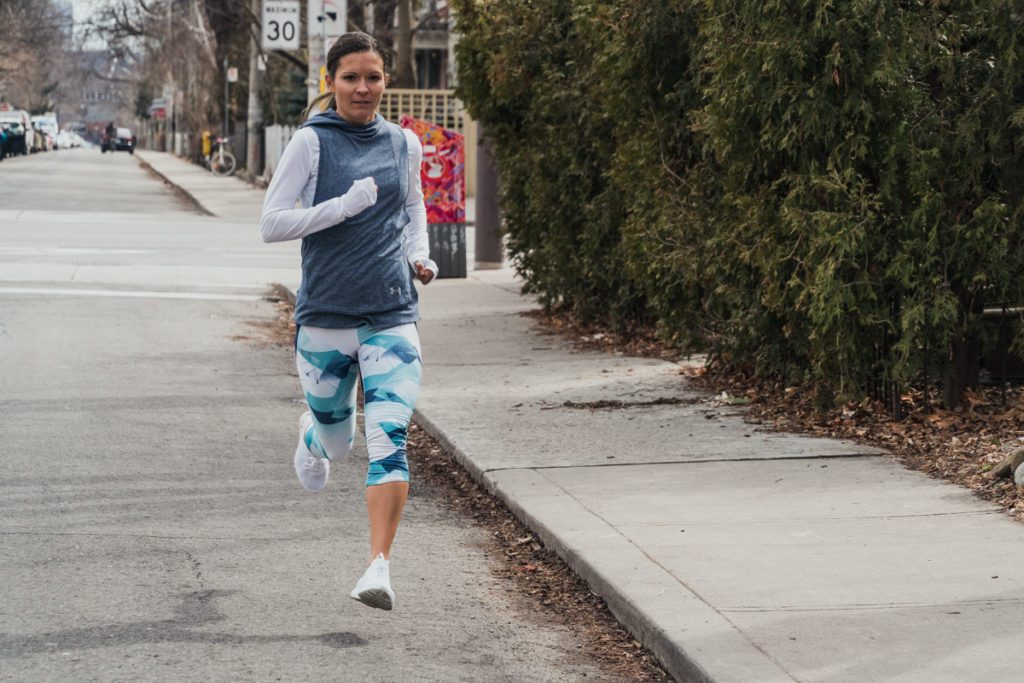
I thought I would start this article with a quip along the lines of ‘phoning one your heroes is scarier than it sounds.’ In fact, it is exactly as terrifying as it sounds. In the age of social media, our athletic heroes can seem even larger than life, like invincible superhumans.
But social media wasn’t quite as big 7 years ago, when I first began tracking Lanni Marchant’s career. There was less written or broadcast about Canada’s female elite runners at that time. As a teenager getting more serious about the sport, I recall having to actively search out women who were having success on the road and the track.
Coming from a family of lawyers, I latched onto Marchant partially because I understood how crazy it was that someone could balance both a legal career and elite running, given the immense workload both require.
On the phone, Marchant sounds like the kind of lawyer you’d want: poised, thoughtful and articulate, but not afraid of dropping the occasional f-bomb. Given that the theme of this issue is ‘finding your edge,’ the first thing I asked Marchant is what that phrase means to her.
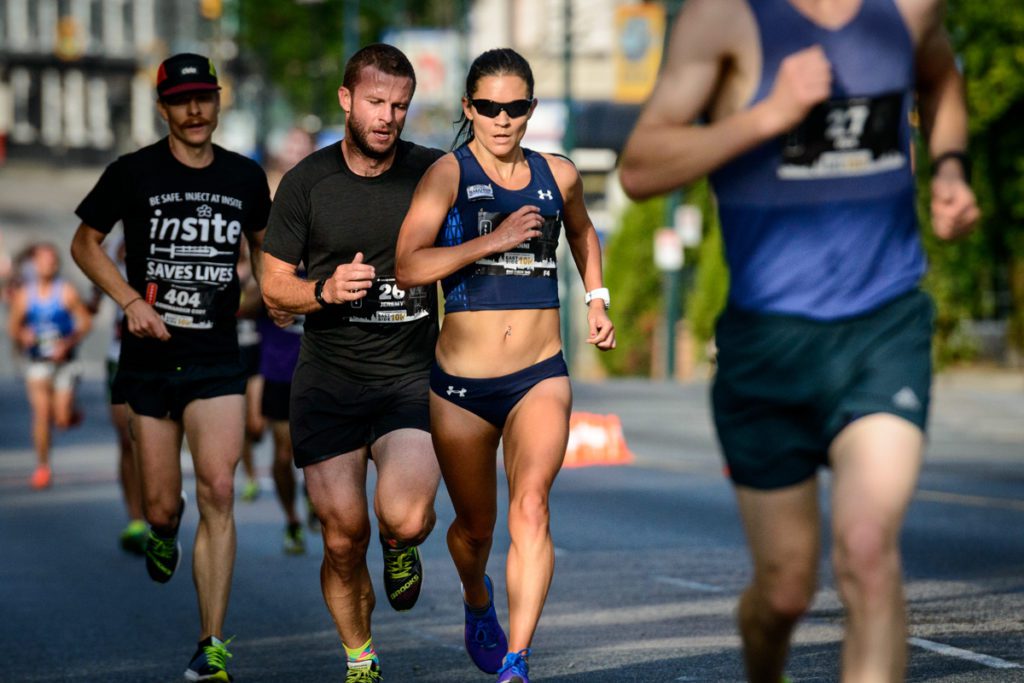
“Find the one thing you have that makes you better than your competitors,” she responded. “For me, in college, I was told that I wasn’t super talented, just super stubborn. Rather than getting upset, I just kind of adopted that as my mindset. I refuse to give up when things get hard.”
What Marchant refers to as her ‘stubbornness’ manifested at an early age. In fact, it’s what led her to running in the first place.
“I was a figure skater when I was younger. I guess I didn’t have any talent for that,” says Marchant with a laugh. “My sisters were always better, I was always a bit more rebellious. The punishment for perceived infractions at skating practice were laps around the parking lot… I turned that punishment into a career.”
Marchant began taking running more seriously in high school, joining her local club, the London Western Track and Field Club, where she began working with Dave Mills, who still coaches her today. Marchant says running was a means to an end. A way for a girl from a family without much to get a scholarship to university. She received one from the University of Tennessee at Chattanooga. Marchant describes her collegiate career as “OK” and characterized by the elements of the sport that no one likes to talk about, such as the pressure to be thin and the cycle of perpetual injury.
“It seemed like every year, I would break, mentally and physically, and then I’d go home for the summer and Dave would have to put me back together,” says Marchant. While Marchant’s experience happened in the NCAA, she knows it isn’t distinctly American, but something that happens at Canadian schools as well. “One girl gets a bit skinny and runs fast, then another, then another. And the coaches either encourage it, or turn a blind eye. Meanwhile, we’re f*cking up our endocrine systems and bone health,” Marchant says.
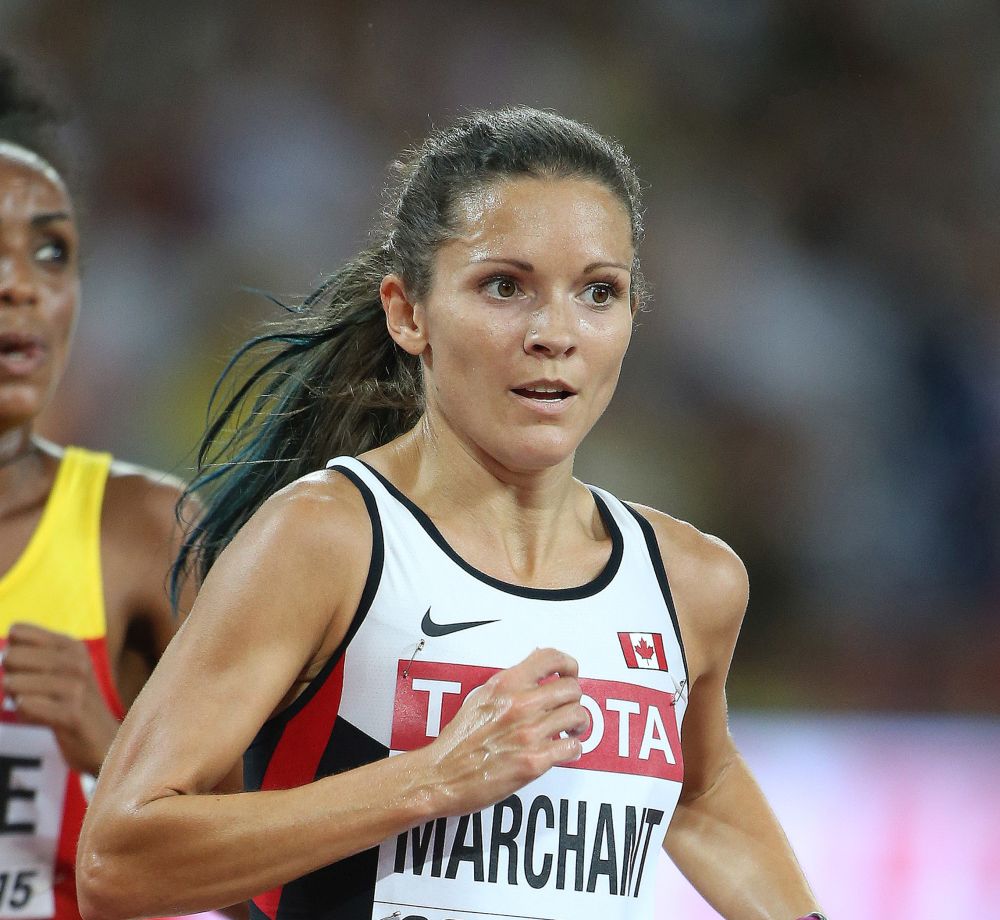
I mention that in my own brief, injury-ending university running experience, it was a sort of an unspoken norm that few of us were having normal menstrual cycles. And when it was talked about, it was as a normal sign of “training hard.” “My mindset back then used to be ‘if you get one period, you’re slipping. Two in a row, you’re getting fat.’ It’s only now when I’m old that I realize how messed up that was,” Marchant says. “Now I try and make sure that I talk openly about reproductive and bone health in front of my nieces, in front of girls at track meets, and hell, clearly even with strangers over the phone!”
We chuckle somewhat darkly about the fact that Stacy T Sims’ book, Roar, which argues that coaches need to acknowledge that female athletes are “not small men,” was only published in 2016, yet treating women like small men and ignoring differences in our physiology is the modus operandi for many coaches.
Marchant reminds me that the women’s marathon is, in fact, the same age as she is. “It seems like a long time to us because our generation is the one doing it. But my grandma was only allowed to run one lap on the track. They’re just now adding a women’s 50K race walk to the Olympics.”
Several years ago, when I was still in undergrad, the CIS (now U-Sports) went through a half-hearted attempt to pose the question of whether the male and female XC distances should be made equal. Currently, the women run 8K and the men run 10K. Acting as a notetaker at a coaches meeting, I was shocked to hear comments along the lines of “No one wants to stick around and watch the girls run another 2K.”
Marchant sympathizes, but isn’t surprised. She’s been a target of misogynistic trolls on social media on multiple occasions. Most recently, Marchant fought back against the objectification of female runners’ bodies with an imitation of Adam van Koeverden’s shirtless iRun magazine cover. Marchant has been criticized for the sports bra and running briefs she wears while racing and the recreation of van Koeverden’s photo was meant to demonstrate how female athletes are sexualized in a way male athletes are not.
In Marchant’s stance on gender equality in sport, it’s easy to see why she makes a good lawyer: “As much as I call myself rebellious or stubborn, I’m not actually anti-rules. I just want them to be applied fairly,” she says.
Running, in fact, allowed Marchant to pay for law school and she would frequently enter road races to pay the bills. She ran her first marathon in Ottawa to chase the sub 2:50 reward money, hoping to live off it while studying for the bar examination. “Dave said, ‘Well, you seem to be able to run a 37 minute 10K coming out of the pool after injury, so why don’t we see how many of those you can run back to back?’ Marchant recalls.
Marchant’s first marathon, like many of us, was a bit of a disaster. “I got tripped by a garbage bag!” she says, laughing. Nevertheless, she ran just under 2:50, passed the bar, and ran another marathon – 2:44 this time. Marchant was sworn in as a lawyer in 2011 and began working at a firm in Tennessee.
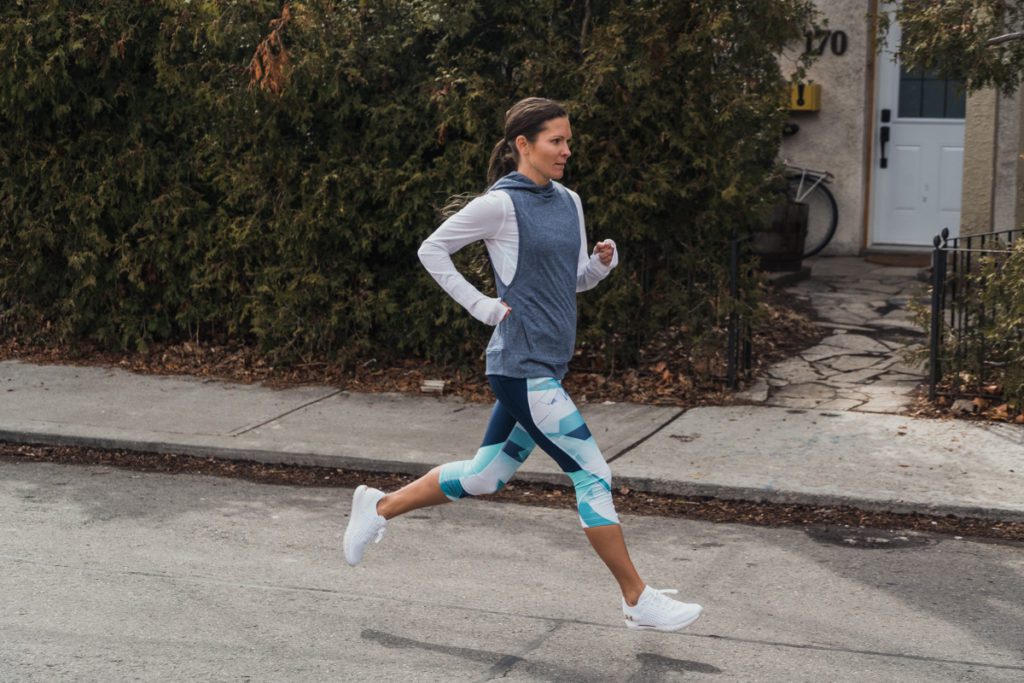
A few months later, Marchant set her sights on a sub 2:40 marathon. She and her coach selected the Rotterdam Marathon as the venue. On her birthday, while in transit to the Netherlands, Marchant received an email from her firm; she was being dismissed for being ‘distracted by running.’
“So, on the flight to Rotterdam, the goal changed from sub 2:40 to sub 2:30, to try and chase the Olympic standard,” Marchant says. “I ran a 2:31, so I decided to appeal to try and make the Olympic team and that’s when I think you all [the media] in the running world first noticed me.”
A broken ankle and later a bout of horrific cramping at Worlds in 2013 that resulted in a 3:01 were, paradoxically, what set Marchant up for the Canadian record. “I just wanted to go out there and see what I could do. I knew Krista was going after the record. So I decided to just hang with her and the pacers and see if I could hold on,” Marchant recalls.
Beating the Canadian record also made Marchant a household name (at least in running households), and allowed her to pay off her law school debt. Eager to continue improving, she ran three marathons in six months in 2014, all around 2:30. When a mysterious bout of foot swelling in Kenya derailed her plan to race a spring marathon in 2015, Mills and Marchant decided to try her out on a track 10K.
Marchant ran a 32:11 at Stanford in March of 2015, a time she found out weeks later was faster than the Olympic standard. She’d been chasing the Worlds standard of 32:00, which she beat soundly at Peyton Jordan a few weeks later, running 31:46. Because of her success on the track, Marchant opted to race the 10,000 instead of the marathon at the Pan Am Games in Toronto.
Marchant earned a bronze on home soil – her first international medal. In the fall, she qualified for the Olympic marathon in Rio. Having qualified for both the 10,000 and marathon, Marchant jumped through administrative hoops in order to compete in ‘the double’ (also playfully termed, in true Canadian jargon, ‘the double-double’).
Marchant describes the build-up to Rio as one in which “alarm bells were going off” in her body. She placed 24th and 25th in the 10,000. Racing in the New York marathon, she knew something was seriously wrong. “My hands and feet were so swollen and I peed pure blood after the race. I could put my fingers in my back and the indentations would stay,” Marchant recalls.
Her condition required surgery in May of 2017, after which she became septic-the body’s life-threatening response to infection. Marchant was running again by late summer. For Marchant, though, things were not back to normal.
In December, her father died. And then in January, at a routine test in Portland with her sponsor, Under Armour, the brand’s scientists expressed concern about her left foot strike. “I’d been complaining of hip pain since a camp in Flagstaff in 2013. I guess this is where the stubborn part of me comes back and bites me. I’m pushing through stuff I shouldn’t be,” Marchant says.
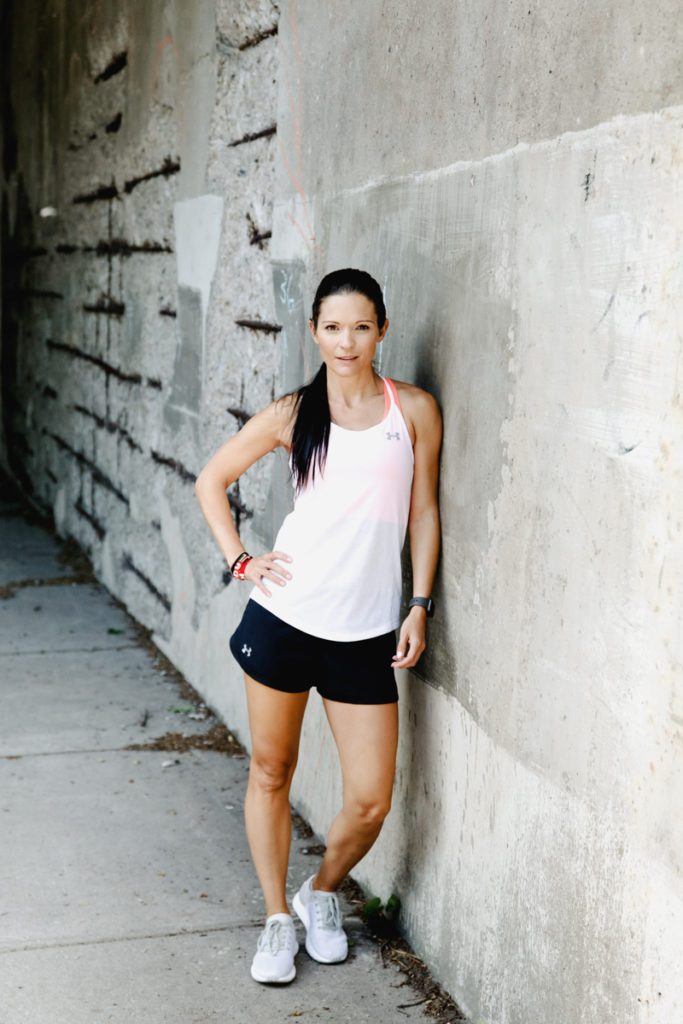
The foot ‘floppiness’ stemmed from a labral tear and bone spur. Marchant underwent surgery in in May. Going from the ‘double-double’ at the Olympics, to a “double blow” has compelled Marchant to draw on her mental fortitude and the strength of the rising tide of female elite performers in Canada.
“Rachel Cliff is running amazingly, Sasha Gollish is running freaking fast while finishing a PhD. Seeing Krista finishing 3rd at Boston was a thrilling. And Kate Van Buskirk went through years of downs to rise back up to where she is and I can draw strength from her. Kate came to the hospital to wash my hair when I was sick. I don’t think she will ever fully appreciate how grateful I am, how important it is for us to stick together, to talk openly about the hard things, including mental health,” Marchant says.
I ask Marchant if she’ll ever write a book (with fingers crossed under my desk she says yes). She’s written down observations of her experiences, including her narrow miss in the hospital, but she’s in no rush to share, just like she’s in no rush to force her body back.
There’s a lyric from an LL Cool J song that is oft cited by runners. It goes: “Don’t call it a comeback,” the next line, not as oft included, is “I’ve been here for years.” The latter seems to be an apt way to characterize Marchant – a force of stubbornness in the Canadian running scene, an athlete who is unapologetically herself and fierce on behalf of those who will follow in her footsteps.
I don’t think Marchant will mind me calling her one of my heroes. Just as long as I remember that doesn’t mean she’s perfect, but rather that she stands for the idea that perfection – well, it’s kind of overrated.
—
Caela Fenton is a staff writer with Canadian Running Magazine.
